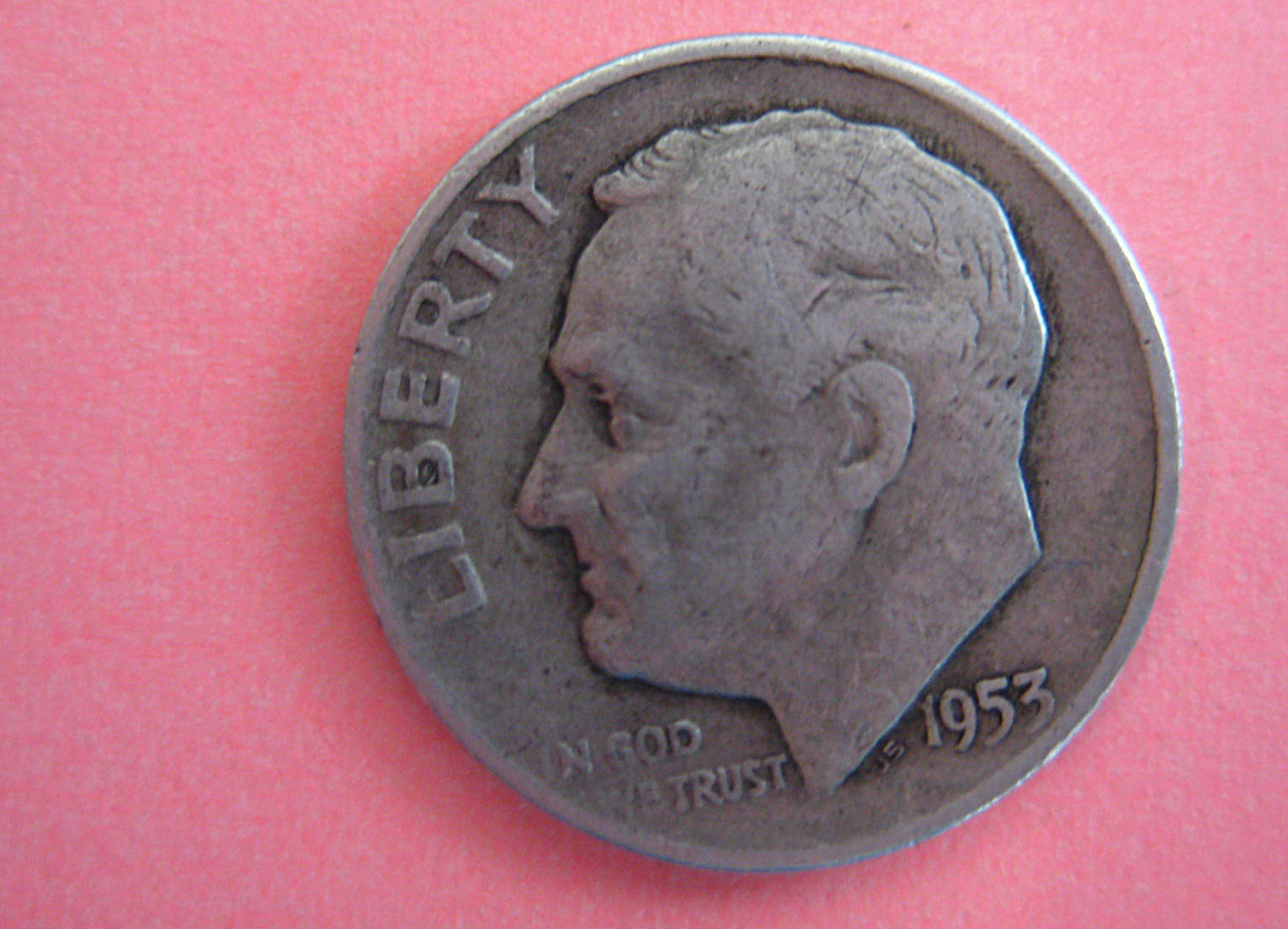Sometimes you need a little rejection to discover something worth keeping. This morning in need of a snack at the office vending machine I kept dropping a coin into the slot that kept working its way into the coin return after each of several attempts to deposit it.
Delicate and sensitive must be the vending machine innards that sit in cold judgment on the legitimacy of a submitted coin, because despite its legal tenderness it just wouldn’t allow this one in. Upon review of the reject I came to see why the lack of recognition: it’s an old fella and made of much different and precious and heavier (relatively) stuff than today’s young’uns.
Upon review at the awesome coinfacts.com page, I found that a 1953 dime was made up of 90% silver and 10% copper and weighed in at a whopping 38.6 grains (roughly 2.5 grams). In comparison today’s 10-cent piece is composed of a 75%/25% alloy of copper and nickel surrounding a pure copper center — not even so much as a whiff of silver (the government stopped minting silver dimes back in 1964). That translates not only into a lower production cost but also into a weight of 35 grains or practically a full quarter-gram lighter.
In other words, dropping this heavyweight 55-year-old into the slot tilted the machine’s scale over to the “Hell No” side and out she came… much to my surprise and appreciation when I finally realized what I’d been unknowingly attempting to discard.
What a difference 3.6 grains makes.

 Follow
Follow